
We, along with our strategic partners, have completed dozens of projects for our clients in Asia, Latin America and Africa. The following are few cases of projects we have done for our clients:
Case A: Seismic Imaging below Multiple Layers of Igneous Rocks
Challenges: The subsurface image has been masked by the contamination of multiples and drastic velocity contracts between igneous layers and sediments.
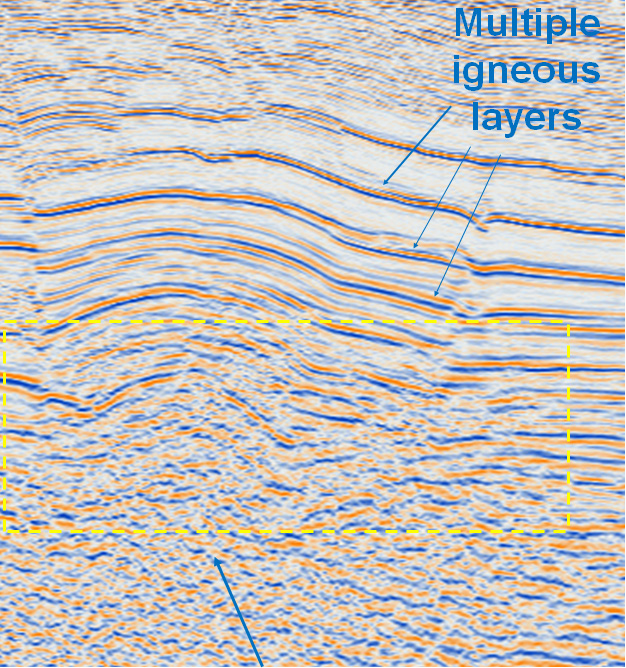
Poor Image below igneous layers before PRAMA and after conventional pre-stack depth migration
Solutions: Using our proprietary technologies and workflow, we have produced more accurate seismic images of the subsurface and unveiled the never before seen geology.
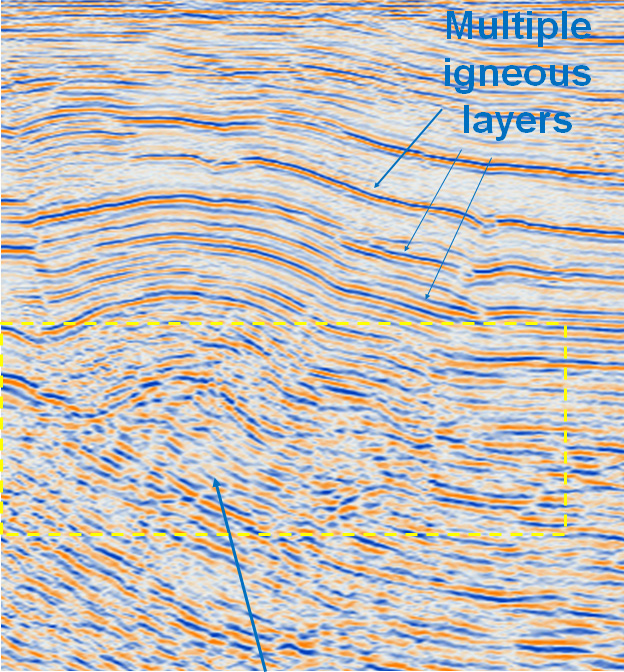
Image below igneous layers after PRAMA and amplitude preserving pre-stack depth migration
Case B: Seismic Imaging of a Complex Salt Structure and Surrounding Stratigraphy
Challenges: There are very steep dip and high velocity contracts between the salt and its surrounding sediments. The image below is the result of the conventional reverse time migration which has migration noises around salt and some improperly migrated reflections at lower part of salt.
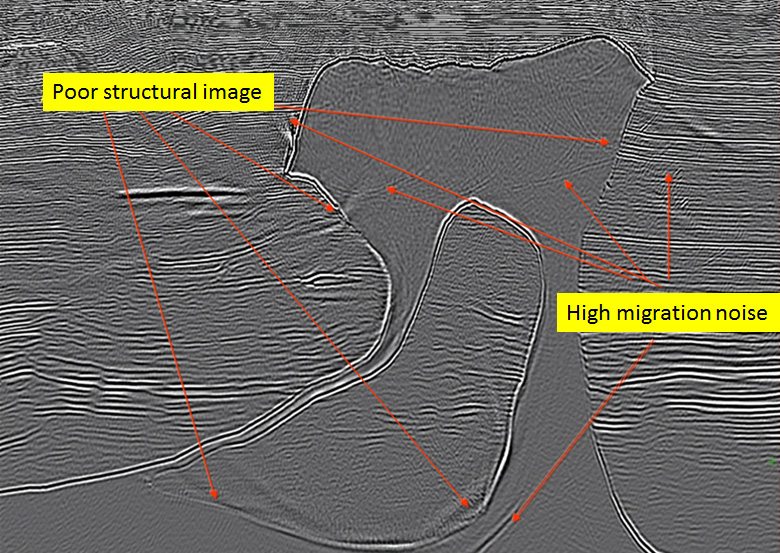
Conventional Reverse Time Migration from a public source generates migration noises and doesn’t preserve amplitude
Solutions: Our high fidelity pre-stack depth seismic imaging solution produces the seismic image below which properly migrates the steeply dipping salt body without migration noise and preserved the true seismic amplitude.
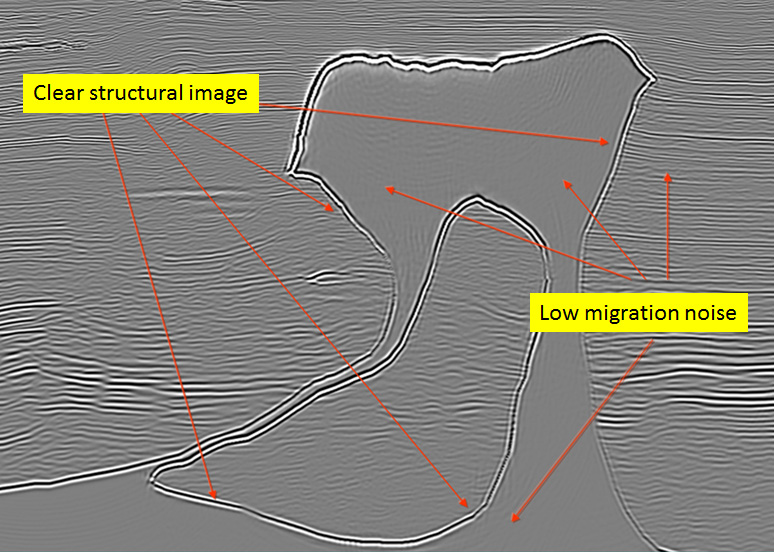
Our pre-stack depth image is free of migration noise, generated by our proprietary amplitude preserving reverse time migration
Case C: 3D Elastic Pre-stack Inversion in Prediction of Hydrocarbon Bearing Sandstone Reservoirs
Challenges: The field development of a sandstone reservoir requires accurate characterization of reservoirs 3-4 meters thick at a depth of 2590-3500 meters. The following is a depth slice of a sandstone inversion using non-amplitude preserving pre-stack depth migrated seismic data. The circled non-reservoir area is not clearly identified.
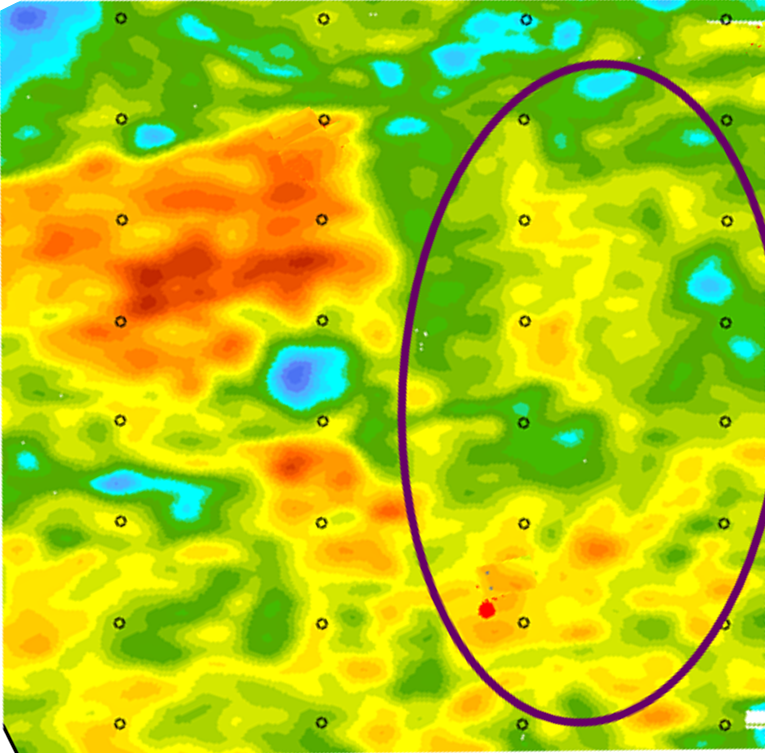
Solutions: The depth slice of the hydrocarbon bearing sandstone attribute below clearly depicts the reservoirs in red-yellow and non-reservoir areas in blue-green for the same stratigraphic layer and at the same depth as the previous illustration. It is the result of our pre-stack elastic inversion derived using our amplitude preserving hi-fi pre-stack depth migrated seismic volume. The hydrocarbon bearing sandstone reservoirs are well-defined and will guide the future development drilling of this field.
.
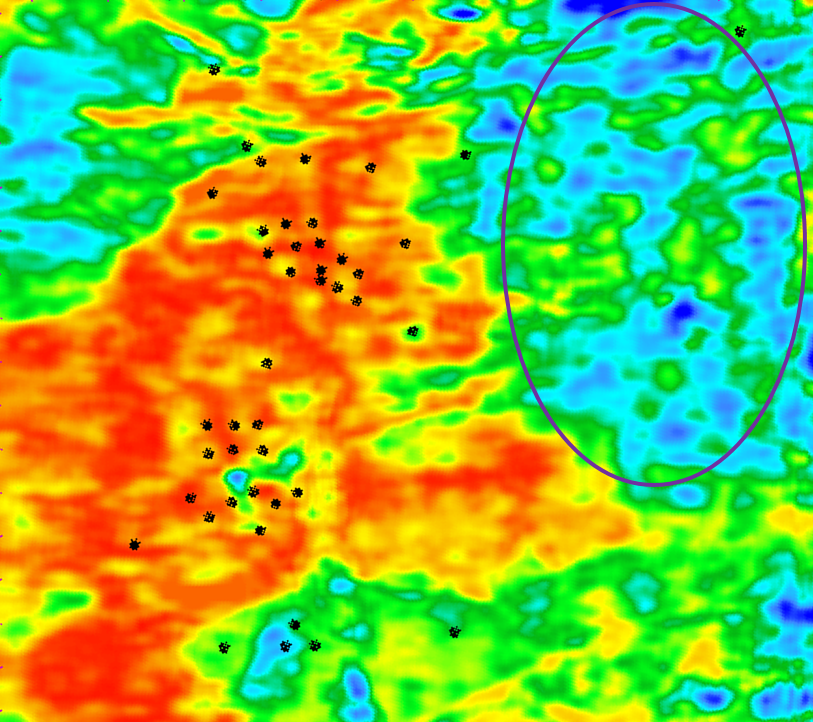
Case D: 3D Fractured Carbonate Reservoir Characterization with Discrete Fracture Network
Challenges: Fracture networks for the development of hydrocarbon in fractured carbonate reservoirs are critical. However, generating a discrete fracture network deterministically is very complex.
Solutions: Our local discrete fracture network (DFN) below shows the fractures penetrated by each well and the connectivity of fractures between wells. The DFN has been used for well planning, mud loss prediction and reservoir management.
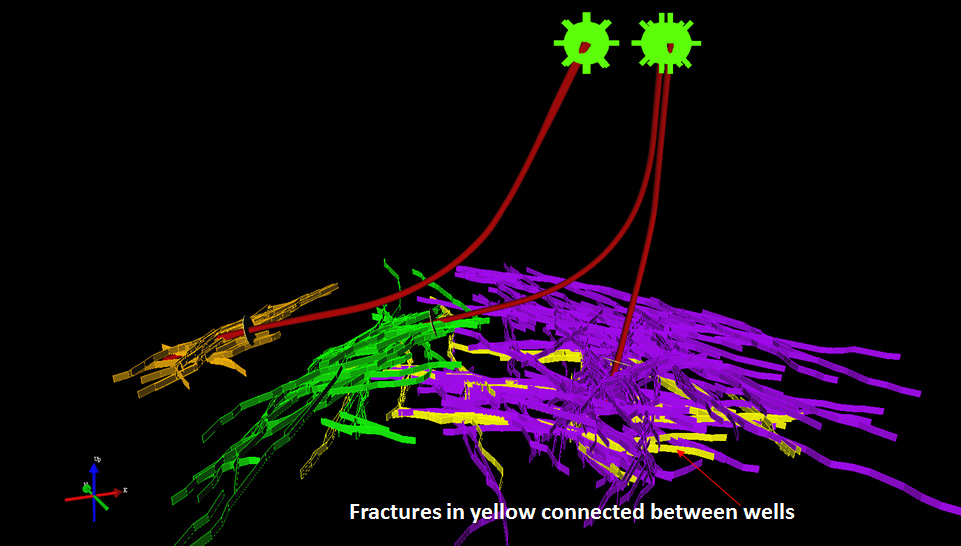
Local Discrete Fracture Network (DFN) penetrated by wells
Case E: 3D Geobody Characterization for karstic limestone reservoirs
Challenges: Quantitatively describing a geobody is critical in reservoir development drilling and management and requires the integration of geologic, well, seismic and production data.
Solutions: Our geobody modeling solution below describes a complex 3D geobody that assists development drilling, reservoir management and resource calculations.
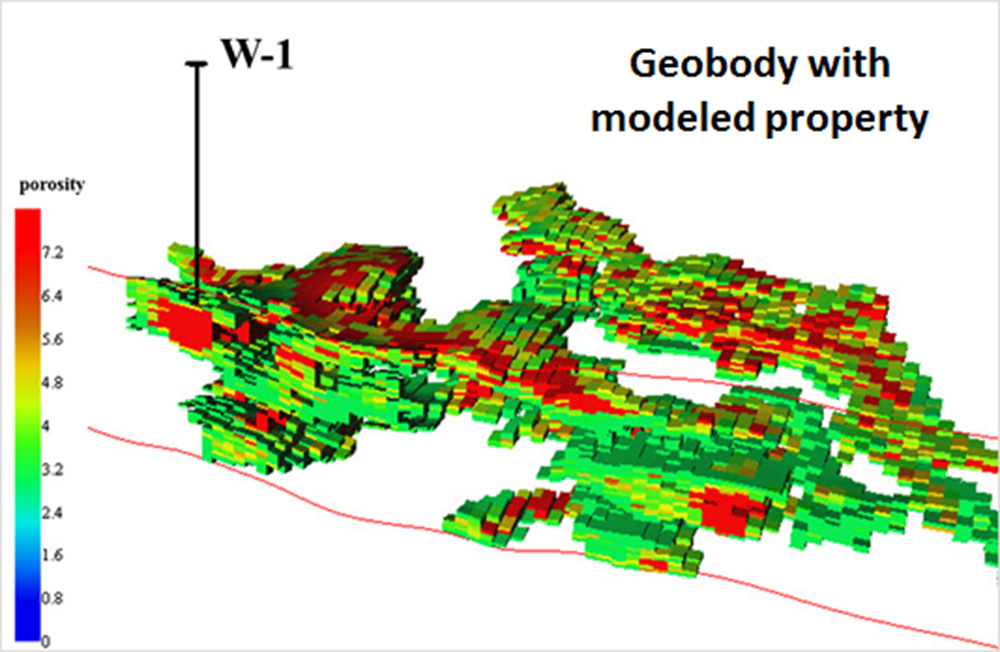
3D model of a connected karstic carbonate reservoir body
Case F: Embedded Fracture Network in Extracted Geobodies of Brittle Rock in a Shale Layer
Challenges: Identification of sweet spots in unconventional reservoirs requires the integration of brittle geobody and natural fracture networks using all geological, well, seismic and production data.
Solutions: Our embedded fracture modeling solution pictured below is an integrated model of the natural fracture network embedded in the geological model with varying mechanical properties.
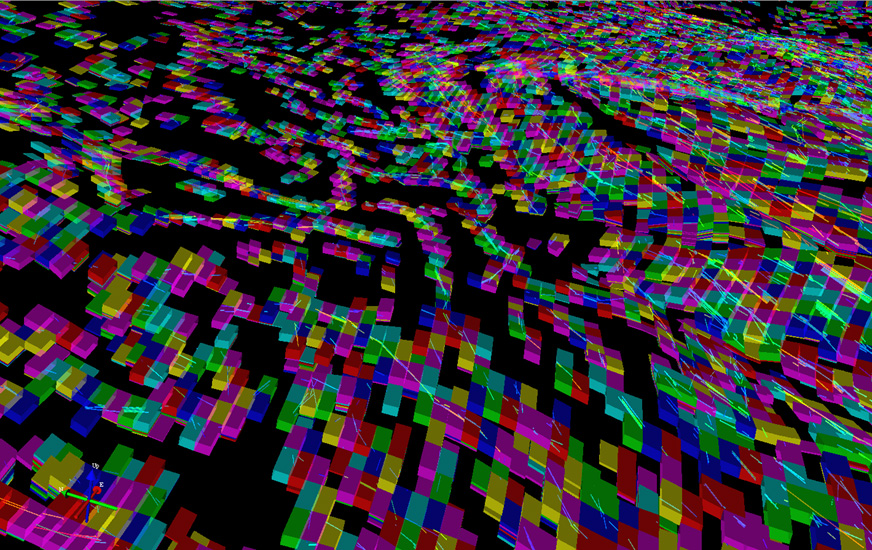
Embedded fracture network (EFM) in geobody cells penetrated by fractures.
